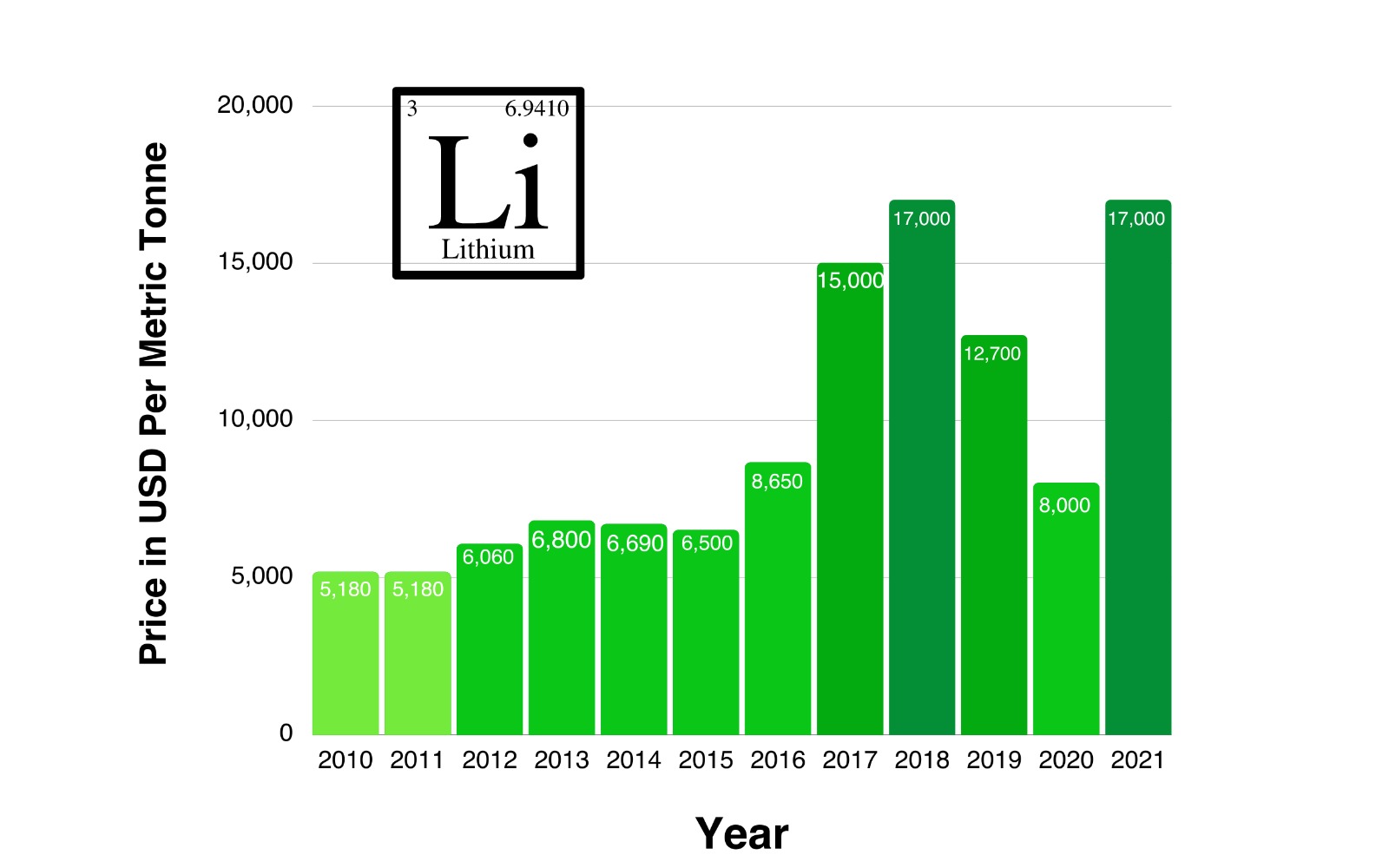Lithium in India: Boon or Bane?

This blog post has been authored by Manish Vaidya, Economics Researcher at Arthashastra Intelligence
On Feb 9, 2023, the Indian Mines Ministry announced a groundbreaking discovery of 5.9 million tonnes of lithium reserves, stashed in Jammu & Kashmir. Lithium has quintessential applications today- it is used in electric cars and for storing the energy generated from renewable sources. Lithium is a nonferrous metal used in batteries. This discovery will have major political, environmental, trade, and climatic implications. While this may easily be read off as a boon for India’s clean energy goals, what about the externalities?
More pedal on the EV Push
The central government has placed immense importance on EVs for achieving the Net Zero goal by 2070. Furthermore, Lithium plays a central role in the materialization of the 30% EV penetration goal by 2030. The demand for lithium has increased by almost 6 times in the past two years, mainly driven by auto manufacturers, the upward pressure on prices can be seen in Fig 1. Domestic production of lithium would reduce costs and would make EVs cheaper for the end users. India has been sourcing 80% of its lithium from China, Taiwan, Australia, and Argentina. Domestic production would also create jobs, generate revenue and contribute towards the welfare and development of J & K.
Source: United States Geological Survey; Compilation and Visualization By Arthashastra Intelligence.
Externalities
While the positive externalities are quite vocalized and spoken about, the side effects of need to be considered as well. Population displacement, destructive effects of the mining on flora and fauna, and so on. Furthermore, the region itself poses many challenges due to geopolitical tensions and threats from opposing forces. In other lithium-abundant nations conflicts on issues like climate justice, labor standards, and property rights have been consistent. While there are hopes that it may positively impact the local economy coming to J & K, the feasibility and the security-related sensitivities are some strong headwinds.
In parts of South America, lithium production has severely impacted the livelihoods of farmers due to excessive water supply being diverted for mining. In Tibet, an instance of toxic chemicals from mining entering the local water supply occurred. In Chile, repeated clashes have occurred between the mining authorities and the local population, due to landscape destruction and water contamination. Transportation and packaging would further aggravate the carbon footprint. Any mining activity scars the landscape destroys water tables and pollutes the earth. Lithium extraction has multi-faceted benefits, but the ill effects of the procurement process must be weighed well against the climatic benefits it would bring through increased EV usage.
The way ahead
The Geological Survey of India (GSI), further reported that the Lithium found in J & K is of the best quality. This discovery would further fuel India’s “atmanirbharta” motive. The government has assured prioritization for the youth in the region with job creation and thorough compensation and rehabilitation.
Domestic lithium production would change a lot of variables and is a pinnacle for India’s climate change redressal move and goals. However, it is not a win-win situation for all. The environmental consequences of mining are major hurdles along the way. Price cuts by Chinese battery giants for automakers have already put downward pressure on lithium prices.
References:
- Retrieved from Slate (Author: Nitish Pahwa) One of the World’s Most Dangerous Places Is About to Have One of Its Most Important Mines
- Retrieved from Wired (Author: Amit Katwala) The spiralling environmental cost of our lithium battery addiction
- Retrieved from Embassy of India (Author: ET Online) Lithium deposits found in J&K: Is India’s EV drive now set to take the fast lane?
- Retrieved from Economic Times (Author: Press Trust of India) Lithium reserve found in Jammu and Kashmir’s Reasi is of best quality: Official
- Retrieved from Reuters (Author: Siyi Liu and Melanie Burton) Analysis: Lithium price slide deepens as China battery giant bets on cheaper inputs
